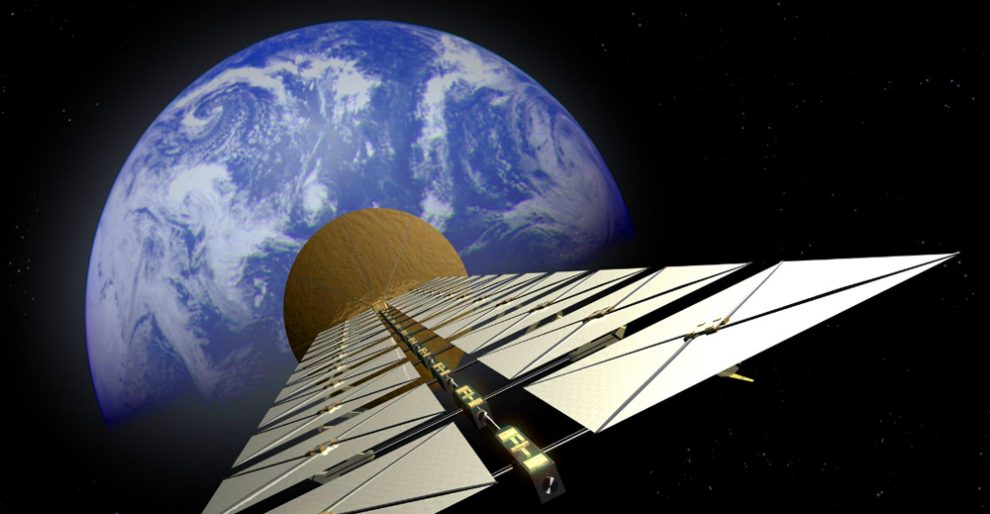Growth in the world population, economy and rapid urbanization will result in the increase in electricity demand in future. The demand is increasing about twice as fast as overall energy use. If the fossil fuels like coal, natural gas, oil at our current rate are kept on burning, then all our fossil fuels are going to get depleted in the coming years. This leads to the rise of renewable energy usage around the world.
Solar energy is one of the most plentiful energy resources on earth. About 173,000 terawatts of solar energy strikes the earth continuously. Which means more than 10,000 times the world total energy usage. There is no doubt that the sun is the most powerful source. The lifetime of the sun is estimated as 4-5 billion years making solar power truly a long term energy.
Solar power could not be collected at night on the earth. So solar powers can only be generated during the day time. It would be easier if we could collect the solar power in space and beam it down to the surface. Clouds atmospheres at night are absent in the Space Based Solar Power and would be able to capture and transmit more energy than normal solar panels on earth.
The idea of Space Based Solar Power has been waving around for more than 70 years. It is the idea of collecting solar power in space and beaming it down to earth.
SBSP or Space Based Solar Power has remained in the consciousness of scientists ever since the idea was made public in a story written by Isaac Asimov in 1941. In 1968 American Aerospace engineer named Peter wrote the first formal proposal for a solar based system in space. There has been extensive research over time. Patents were filed and designs were finalized until they got into sense. It was realized that unless the cost of payload was brought down by an order of magnitude, this project will remain as a science fiction fantasy.
The development of SBSP relies on three technologies. The space launch technologies, second is the solar cells, and the powerless power transmission technologies. Each time there’s a breakthrough development in any of these speculations on SBSP go up.
The recent success of the Falcon heavy launch vehicle by Spacex was followed up with a review of the SBSP concept.
There are few advantages on SBSP
- We can get clean emission free energy 24/7, 365 days a year.
- We can direct energy to where and when it’s needed very easily.
- Contrary to the popular belief it has minimal plant and animal life interference if designed to certain parameters.
- The satellite could be scaled up in modular fashion while remaining functional all the time.
Elon Musk has both solar power and space launch technology. Elon was rather annoyed by the idea based on the fact that there are multiple layers of energy conversion involved. Sunlight had to be converted to electricity, which then had to be converted into microwaves. It has to be then reconverted into electricity. At every step a portion of energy is lost.
Dr. APJ Abdul Kalam (former president) said that “by 2050, even if we use every available energy resource we have, clean and dirty, conventional and alternative, solar, wind, geothermal, nuclear, coal, oil, and gas, the world will fall short of the energy we need by 66%. There is an answer. An answer for both the developed and developing countries. This is a solar energy source that is close to infinite, an energy source that produces no carbon emissions, an energy source that can reach the most distant villages of the world, and an energy source that can turn countries into net energy exporter.”
India has gaped at this option before. In 1987, the first bit of work was held looking at advanced space transportation system design concepts for cost-effective space solar power. ISRO is reported to have done some exercise looking at the feasibility of this option and checked three specific configurations. Subsequently, ISRO is thought to have welcomed an International Preliminary Feasibility Study. Other than terrestrial solar and wind power plants, SBSP is accessible throughout the year, in huge amounts. It can also reportedly work irrespective of conditions that are a challenge for other alternative energy sources such as availability of sunlight, cloud cover, or wind speed.
With the earth’s resources set to get scarce for the succeeding generations, it makes sense to tap and use material from other planets, secretary of the Department of Space K Sivan, said.
Making a strong pitch for creating a solar power satellite, Sivan said, “We need to have a solar panel on the spacecraft. It should have 30 kilometers length and 10 kilometers in width. This spacecraft needs to be put into space and it will convert solar energy into electrical energy and then into microwave energy,” he explained.
0

